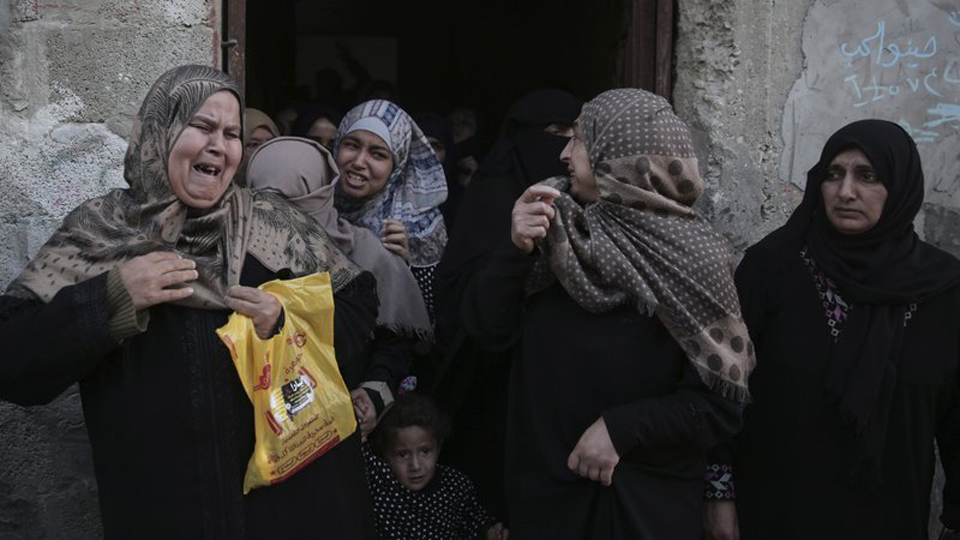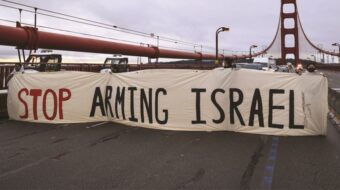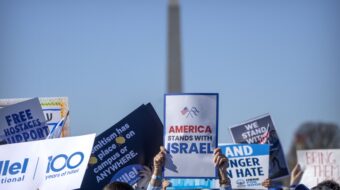
The Palestinian death toll in last week’s mass protest on the Gaza-Israel border rose to 18 on Monday, officials said, as Israel continued to reject allegations of unlawful use of lethal force against unarmed demonstrators.
More than 750 Palestinians were wounded by Israeli gunfire in Friday’s protest, according to Gaza health officials, making it the bloodiest day in Gaza since the 2014 Israel-Hamas war.
Gaza’s ruling Hamas movement has called for mass sit-ins along the besieged enclave’s border with Israel in the run-up to the 70th anniversary of what Palestinians call the “Nakba,” or “catastrophe,” on May 15. The day marks the forced expulsion of over 700,000 Palestinians from their homes during the establishment of the Israeli state in 1948.
The vast majority of Gaza residents are descendants of Palestinians who fled or were driven from communities in what is now Israel.
The protests involved giant tent cities set up within a few hundred yards of the border, with thousands marched up close to the Israeli lines. Buses took Palestinians to the border while mosques called on their congregations to participate.
“The large crowds reflect the Palestinian people’s determination to achieve the right of return and break the siege, and no force can stop this right,” Hamas spokesman Fawzi Barhoum said.
On the anniversary itself, Hamas says Palestinians will seek to march across the border.
The Israeli Defense Forces said Palestinians rolled burning tires at the lines and threw stones, prompting soldiers to open fire at “the main instigators.”
One of the latest confirmed victims was a farmer, Amr Samour, killed by an Israeli tank shell in his fields before dawn as he gathered parsley for market.
Israel said it had directed fire at “suspicious figures near the border fence,” though he was killed more than a kilometer away from it.
“I was working in the next field,” said his relative Yasser Samour. “We heard shelling landing on the field where Amr works. We ran there and found him hit directly.”
Israel said it had doubled the number of troops guarding the border.
“We are identifying attempts to carry out terror attacks under the camouflage of riots,” Major General Eyal Zamir added.
He warned Palestinians to stay away from the border and said Hamas was responsible for any violence that took place.
However, the military’s open-fire policies came under more scrutiny as two amateur videos emerged purportedly showing two Palestinians being shot—one killed and one wounded—while not posing any apparent threat to soldiers.
In one video, a man later identified as Ibrahim Abu Shanab is seen kneeling on the ground in the first of two rows of worshippers Friday, facing the border fence at a distance of 150 to 200 meters. Suddenly, he stands up, limps a few meters, collapses and his carried away by young men.
Adli Abu Taha, who filmed the scene on his mobile phone, told The Associated Press that Abu Shanab had thrown stones close to the fence before joining the group for Friday prayers. The incident took place east of the southern Gaza city of Rafah, and medics said Abu Shanab was shot in the leg.
In another video that spread on social media, a young man later identified as Abdelfatah Abdelnabi, is seen being fatally shot from behind while carrying a tire as he ran away from the border.
Majd al-Omari, who filmed the incident on his smartphone, said that just before the shooting, Abdelnabi had been involved in burning tires about 200 meters (yards) from the fence.
The Israeli military accused Hamas on Sunday of releasing videos that were incomplete, edited or “completely fabricated,” but did not elaborate.
Rights groups said that regardless of disputes over video claims, it’s unlawful for the Israeli government to use lethal force when Palestinian protesters don’t pose an imminent threat to the lives of its soldiers.
“An army can use reasonable force to defend a border,” said Omar Shakir of the international group Human Rights Watch. “This was an incident where soldiers were firing from behind the fence, separated by buffer zones and other objects, firing on individuals well behind the fence, in some cases retreating, not moving forward, or advancing without posing imminent threat.”
Israeli Defense Minister Avigdor Lieberman continues to reject international calls for an investigation.
This article features content from Morning Star, Associated Press, and other sources.












Comments